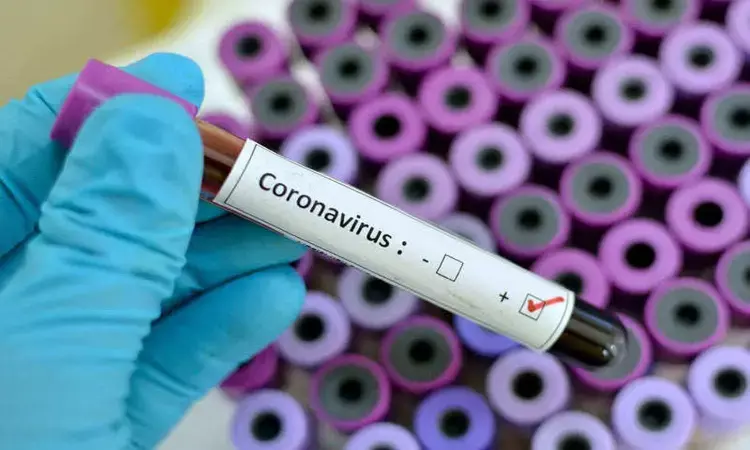- Home
- Medical news & Guidelines
- Anesthesiology
- Cardiology and CTVS
- Critical Care
- Dentistry
- Dermatology
- Diabetes and Endocrinology
- ENT
- Gastroenterology
- Medicine
- Nephrology
- Neurology
- Obstretics-Gynaecology
- Oncology
- Ophthalmology
- Orthopaedics
- Pediatrics-Neonatology
- Psychiatry
- Pulmonology
- Radiology
- Surgery
- Urology
- Laboratory Medicine
- Diet
- Nursing
- Paramedical
- Physiotherapy
- Health news
- Fact Check
- Bone Health Fact Check
- Brain Health Fact Check
- Cancer Related Fact Check
- Child Care Fact Check
- Dental and oral health fact check
- Diabetes and metabolic health fact check
- Diet and Nutrition Fact Check
- Eye and ENT Care Fact Check
- Fitness fact check
- Gut health fact check
- Heart health fact check
- Kidney health fact check
- Medical education fact check
- Men's health fact check
- Respiratory fact check
- Skin and hair care fact check
- Vaccine and Immunization fact check
- Women's health fact check
- AYUSH
- State News
- Andaman and Nicobar Islands
- Andhra Pradesh
- Arunachal Pradesh
- Assam
- Bihar
- Chandigarh
- Chattisgarh
- Dadra and Nagar Haveli
- Daman and Diu
- Delhi
- Goa
- Gujarat
- Haryana
- Himachal Pradesh
- Jammu & Kashmir
- Jharkhand
- Karnataka
- Kerala
- Ladakh
- Lakshadweep
- Madhya Pradesh
- Maharashtra
- Manipur
- Meghalaya
- Mizoram
- Nagaland
- Odisha
- Puducherry
- Punjab
- Rajasthan
- Sikkim
- Tamil Nadu
- Telangana
- Tripura
- Uttar Pradesh
- Uttrakhand
- West Bengal
- Medical Education
- Industry
Nitric oxide a new treatment option for COVID-19

Researchers at Uppsala University have noted that an effective way of treating the coronavirus that caused the 2003 SARS epidemic also works on the SARS-CoV-2 virus. The substance is nitric oxide (NO), a compound that has antiviral properties and is produced by the body itself.The study is published in the journal Redox Biology.
"To our knowledge, nitric oxide is the only substance shown so far to have a direct effect on SARS-CoV-2," says Åke Lundkvist, a professor at Uppsala University, who led the study.
Since there is still no effective cure for COVID-19, the main emphasis in the treatments tested has been on relieving symptoms. This can shorten hospital stays and reduce mortality. To date, however, it has not been possible to prove that any of these treatments has affected the actual virus behind the infection.
Nitric oxide (NO) is a compound produced naturally in the body. Its functions include acting like a hormone in controlling various organs. It regulates, for example, tension in the blood vessels and blood flow between and within organs. In acute lung failure, NO can be administered as inhaled gas, in low concentrations, to boost the blood-oxygen saturation level. During the SARS (severe acute respiratory syndrome) coronavirus epidemic of 2003, this therapy was tried out with success. One key reason for the successful results was that inflammation in the patients' lungs decreased. This property of nitric oxide - the protection it affords against infections, by being both antibacterial and antiviral - is the very one that now interests the researchers.
Their study builds further on a discovery about the coronavirus that caused the first SARS epidemic. In 2003, NO released from S-Nitroso-N-acetylpenicillamine (SNAP) proved to have a distinct antiviral effect. The researchers from Uppsala University and Karolinska Institute have now investigated how the novel coronavirus involved in the current pandemic, SARS CoV-2, reacts to the compound. And SNAP was shown to a clear antiviral effect on this virus, too - and an effect that grew stronger as the dose was raised.
"Until we get a vaccine that works, our hope is that inhalation of NO might be an effective form of treatment. The dosage and timing of starting treatment probably play an important part in the outcome, and now need to be explored as soon as possible," Åke Lundkvist says.
The research group are now planning to proceed by investigating the antiviral effects of NO emitted in gas form. To do so, they will construct a model in the laboratory in order to safely simulate a conceivable form of therapy for patients.
Hina Zahid Joined Medical Dialogue in 2017 with a passion to work as a Reporter. She coordinates with various national and international journals and association and covers all the stories related to Medical guidelines, Medical Journals, rare medical surgeries as well as all the updates in the medical field. Email: editorial@medicaldialogues.in. Contact no. 011-43720751
Dr Kamal Kant Kohli-MBBS, DTCD- a chest specialist with more than 30 years of practice and a flair for writing clinical articles, Dr Kamal Kant Kohli joined Medical Dialogues as a Chief Editor of Medical News. Besides writing articles, as an editor, he proofreads and verifies all the medical content published on Medical Dialogues including those coming from journals, studies,medical conferences,guidelines etc. Email: drkohli@medicaldialogues.in. Contact no. 011-43720751


